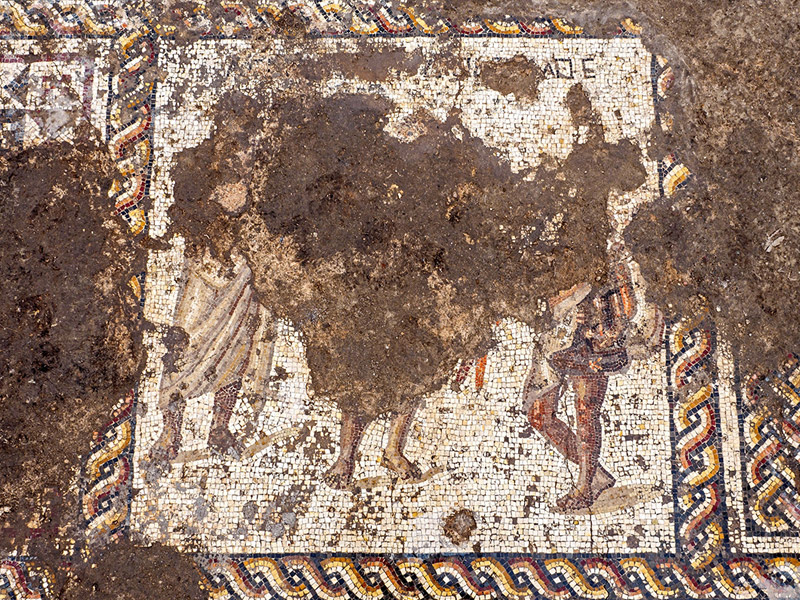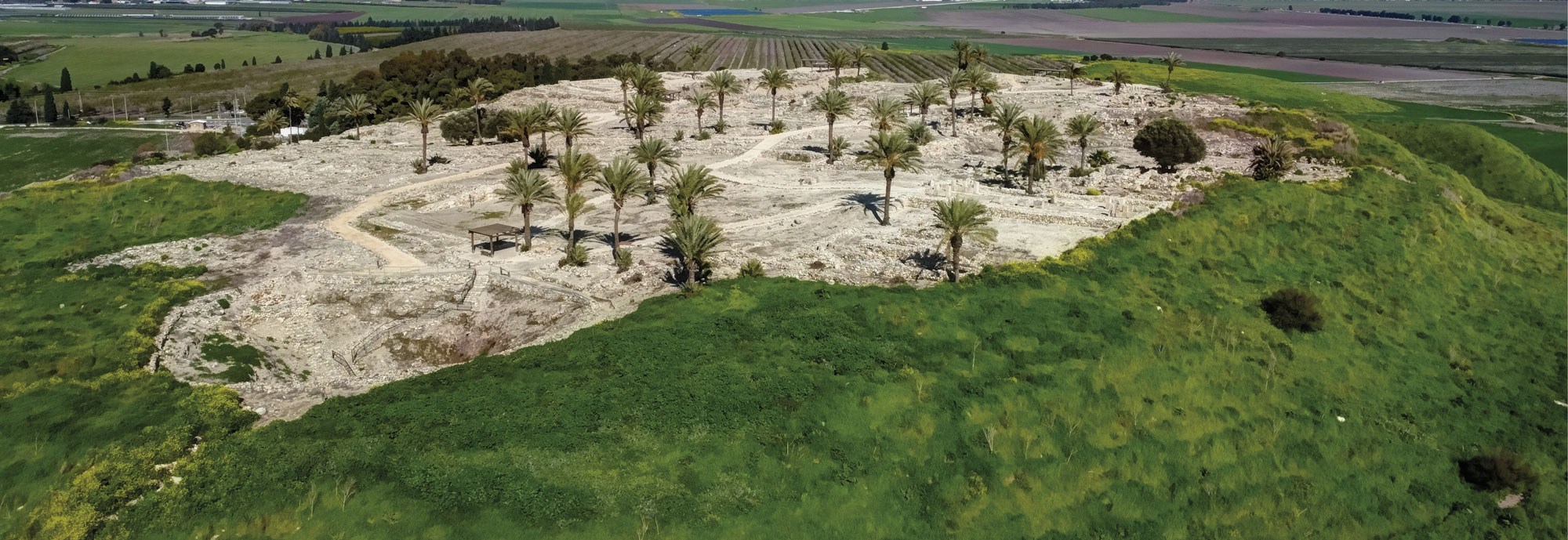
CAESAREA, ISRAEL—Reuters reports that Israel Antiquities Authority archaeologists discovered a mosaic dating to the second or third century A.D. while excavating a building dating to the Byzantine period in Caesarea's agora. The mosaic measures about 11 feet wide by 26 feet long, and is made up of multicolored geometric patterns, a long Greek inscription, and an image of three toga-clad men. Peter Gendelman, co-director of the excavation, said that if the earlier building had been a private home, the men may have been its owners, but if the mosaic were part of a public building, the men may have been donors or members of the city council. The high-quality floor was damaged during the construction of the Byzantine structure some 300 years later. To read in-depth about mosaics at another site in the area, go to “Expanding the Story.”









